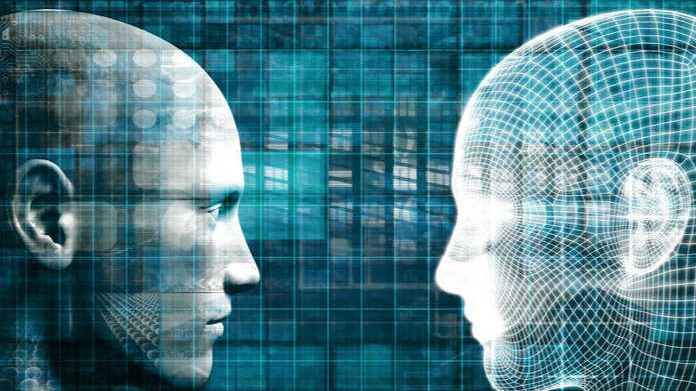
In this Point of View, Adam Rogers, co-CEO and chief technology officer at Ultimate Software, shows us how organizations can use lessons learned by others to put technology to its best use.
In today’s world, every successful company is a tech company.
It’s become impossible to separate business strategy from technological innovation. That’s why everyone from retailers to health care professionals are investing heavily in technology solutions to help them market, improve offerings and drive their business. Combine that with the fact that we’re living and working in an age of industry overhaul—where tech companies like Yelp, Netflix and Lyft have essentially obliterated longstanding giants—and the underlying message is clear: Adapt to the digitalization of the workplace or become obsolete.
For many executives, this push to embrace innovation is perplexing because of the deluge of exciting new technologies. While the U.S. economy grew 2.3 percent last year, examples abound of companies that went bankrupt because they invested in the wrong technology—or the right one but too soon.
Case studies of early adoptions can show us how to leverage emerging technology to better serve employees and customers. Here's some examples. #HR #HRTech @UltimateHCM Share on XFortunately, case studies of early adoptions offer opportunities to gauge the effectiveness of new tech. The following trends are revolutionary, rapidly maturing and have been successfully applied across industries. From these examples, we can learn how to leverage emerging technology to better serve our employees and customers.
Artificial Intelligence

Adam Rogers
Artificial intelligence triggers a substantial amount of excitement, fear and media coverage. AI’s not a new concept—the term was originally coined in 1956—but today developers have the processing power and data necessary to train programs to solve organizational problems and optimize efficiencies. In a recent Gartner study, every company surveyed intended to incorporate AI-driven solutions, with 41 percent already in the pilot or adoption phase. Machine learning has become increasingly embedded in new solutions, delivering in-depth insight into business metrics and improving data-based decision-making.
Consider supply chain management. While even highly seasoned professionals are prone to under- or overstocking, ML-based forecasting engines apply algorithms and hierarchies to predict future need with exceptional accuracy. Food giant Nestlé, for example, uses supply chain forecasting to improve accuracy on a global level, with more than 447 factories operating in 194 countries. This strategy improved Nestlé’s sales precision by 9 percent in Brazil alone.
Meanwhile, Salesforce debuted a CRM solution that uses machine learning to build comprehensive data-based customer profiles, identify crucial touch points and uncover additional sales opportunities. Lowe’s in-store “LoweBot” applies sophisticated voice recognition, autonomous movement and machine learning to assist customers, process inventory and search for product or price discrepancies. And SPS Companies, a manufacturing and wholesale distributor, has improved talent metrics and redefined its employee experience by implementing an AI-based HCM solution that can identify employee pain points in real time. (Full disclosure: SPS Companies, Inc. and First Horizon National Corporation are Ultimate Software customers.)
Analytics
Careful data analysis is crucial for organizations to truly understand performance. Its resulting insights are increasingly valuable when coupled with analytical benchmarking, which allows companies to compare themselves with peers and competitors in terms of web traffic, customer churn or employee engagement. This industry-specific information helps identify gaps in an organization’s performance and can be leveraged to achieve a competitive advantage.
Additionally, AI is bridging the gap between operational and predictive reporting. Predictive analytics can foresee everything from employee retention to long-term weather patterns, and machine learning continuously and automatically improves predictions with experience.
Boston Medical Center applies predictive analytics to determine staff and room allocation during peak periods, optimizing scheduling while improving efficiency and wait times. Netflix applies its own advanced algorithms to predict not only whether certain content will be well-received but also pinpoint exactly which users are likely to enjoy it. And the streaming giant says an astonishing 80 percent of its viewed content results from their predictive recommended algorithms.
Natural Language Processing
We’re communicating with the digital world in unprecedented ways. AI-based conversational tools have certainly advanced, but when technology relies on artificial languages like Java or C++, it’s automatically limited to literal translation. Human language is complex and brimming with subtleties, so there’s ample opportunity for misunderstanding.
In contrast, natural language processing (or NLP) solutions learn to speak organically through practice, just as people do. These tools can even discern a wide range of emotions and recognize the differences between anger, frustration and fear.
NLP has limitless potential in the workplace. First Horizon National Corporation, a leading financial services company, uses an NLP-powered solution to deploy open-ended employee surveys, uncovering not only what their employees are saying but how they actually feel. Empowered by these unbiased insights, managers can take immediate action to enhance the employee experience and improve business performance.
Deloitte recently partnered with Kira Systems to develop NLP models capable of rapidly digesting complex documents and extracting important information for further analysis. This type of solution is likely to have incredible implications for law, finance and other contract-heavy industries.
Organizational Network Analysis (ONA) is also gaining steam, where companies use NLP to track all internal communications, including email, HCM data and collaboration platforms like Slack to identify top performers, locate bottlenecks and even detect fraud. General Motors and Cigna Heath Insurance, for example, are experimenting with ONA in their organizations.
Blockchain
Blockchain is another exciting technology that’s been around for years but is just beginning to garner mainstream attention. While most people associate it with cryptocurrency, blockchain represents a decentralized, encrypted secure system of record with applications in government, HR and countless other industries.
Shipping companies like Maersk are already experimenting with blockchain to track cargo and discourage tampering, while farmers and even mega-chains like Walmart use the technology to follow and ensure the quality of livestock transactions. Even diamond-makers are following suit. Everledger has significantly eliminated counterfeiting by registering its diamonds in a blockchain.
What’s Next?
These technologies have incredible implications, and we’re just beginning to see their capabilities. More importantly, we’re just beginning to imagine real-world applications for their use. I challenge leaders everywhere to consider the potential of these burgeoning technologies and the positive impact they could have on their organizations and the future of work.
Adam Rogers is co-CEO of Ultimate Software, a leading cloud provider of HCM solutions. Based in Weston, Fla., Ultimate Software is a sponsor of the HCM Technology Report. To learn more, click here. A version of this article was originally published in Forbes.
Sign up for our newsletter here.
Image: 123RF














